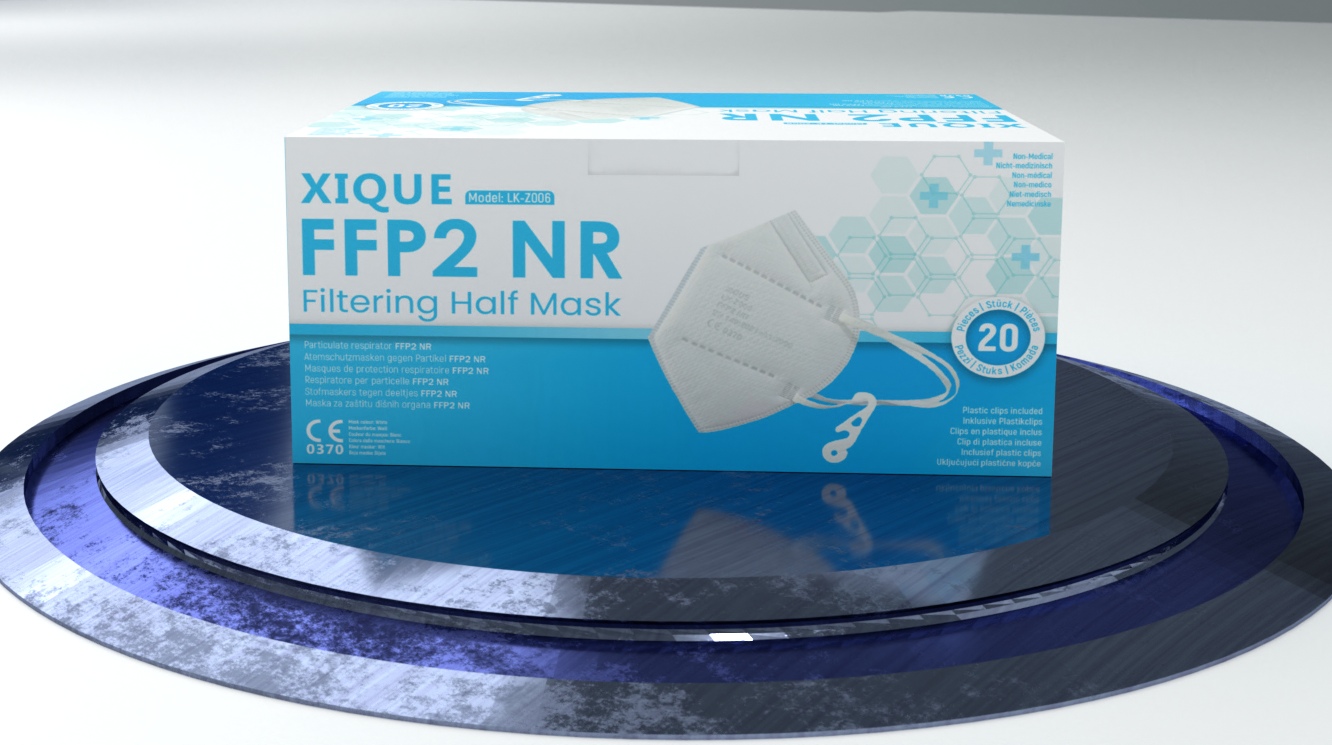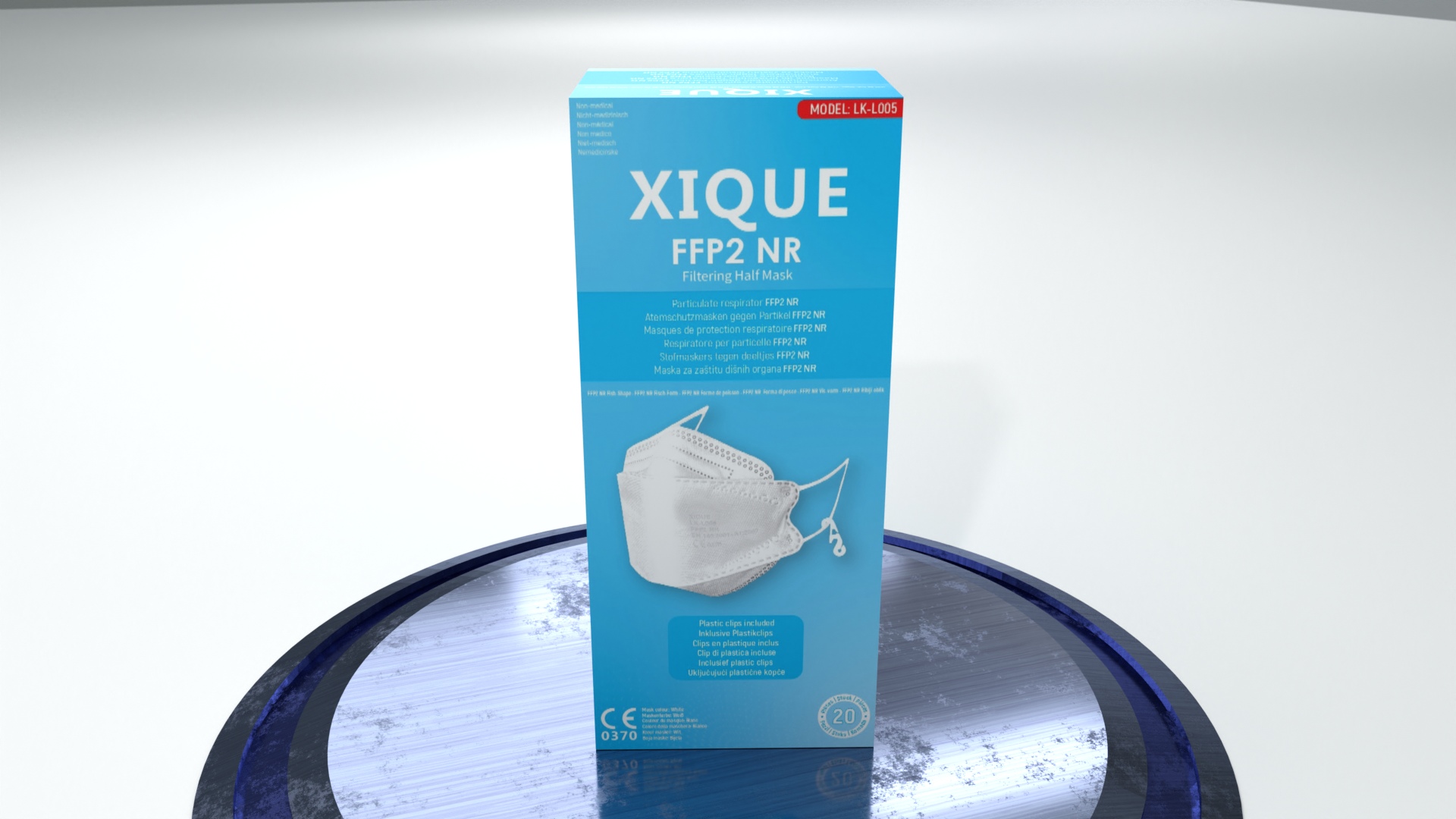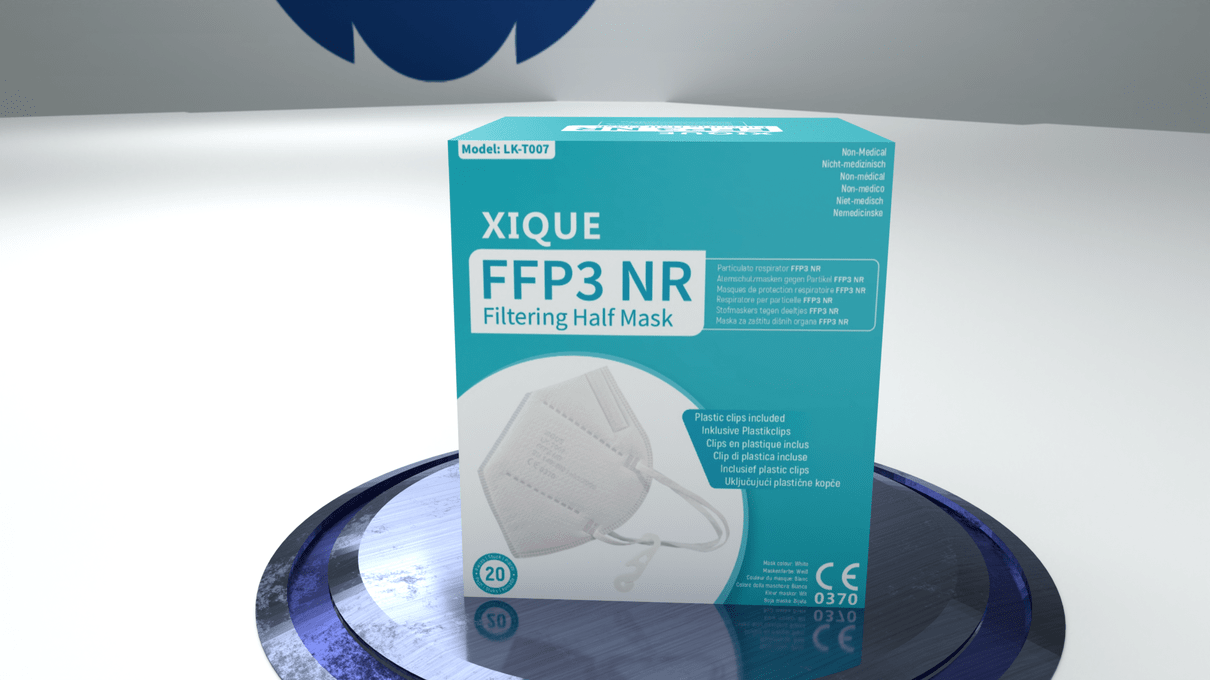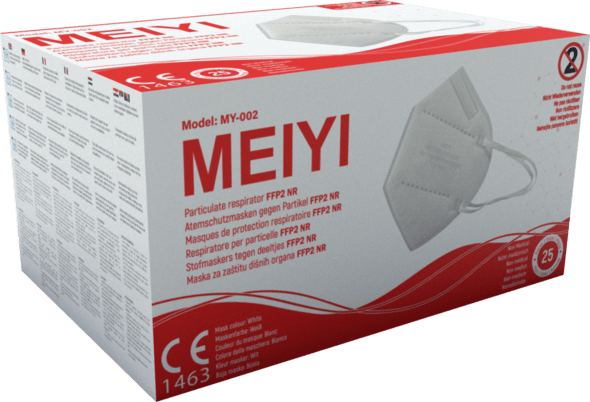Buy Medical Protective Clothing
In our OdemShop, you will find a variety of medical protective clothing. From surgical gowns to shoe covers, our products ensure a hygienic and safe working environment.
Medical Protective Clothing - Everything You Need to Know
Our body is our temple - but it can easily be overrun by bacteria and viruses, especially in crisis situations. To protect people from infection and injury, it is important to wear the right medical protective clothing. By choosing specific clothing items, both skin and organ diseases can be reduced, and it ensures that patients, staff, and employees are equally well protected.
Due to the complexity of the topic, there is much to consider: What requirements does each clothing item have? What do certain markings mean for material qualities? Where can you find high-quality products? In this article, we take the time to explain the various aspects of medical protective clothing in detail.
What is Medical Protective Clothing?
Medical protective clothing is any type of clothing that has been specifically designed to reduce the risk of infection for medical personnel and other individuals. It can be made in the form of disposable or reusable items. The clothing usually consists of protective gowns, surgical gloves, face masks, hoods, protective eyewear, protective clothing for feet and legs, and other items. The purpose of this clothing is to repel bacteria and reduce the user's contact with potentially infectious substances to a minimum. It not only protects those who wear it but also patients and other individuals in the vicinity from potentially harmful pathogens. Medical protective clothing also helps the wearer avoid allergic reactions to chemical disinfectants and much more. Due to its benefits, medical protective clothing has gained significant importance in recent times.
The decision on which type of protective clothing is best suited for various situations is at the discretion of the doctor or caregiver. In some cases, it is necessary to use at least a universal standard form of protective clothing - especially in surgical procedures or laboratory situations - but there are also specialized options for special occasions. Therefore, it is important to understand what types of medical protective clothing are available and what they can be used for. That is why we are now discussing the different types of medical protective clothing.
Types of Medical Protective Clothing
There are many different types of medical protective clothing that can be adapted depending on the situation. These include:
- Protective Eyewear
- Protective Masks
- Face Shields
- Disposable Gowns
- Disposable Gloves
- Disposable Aprons
- Shoe Covers
- Head Coverings
- Respiratory Masks
- Protective Overalls
Disposable masks or surgical masks are the most commonly used element of medical protective equipment. They protect the wearer from potentially infectious particles in the air or in the environment.
Medical disposable gloves provide a barrier against potential pathogens and help to avoid unwanted contact with the patient type. Most surgical gloves are made of latex or vinyl materials and have a loose fit so that the user can still work sensitively - thus keeping the user's skin clean and sterile.
Gowns and overalls protect clothing from blood stains or fluid splashes during medical treatment processes. They usually come as a full-body suit and are often made waterproof to protect the wearer passively for a long time; they can also be easily removed if necessary.
Surgical caps provide extra protection for the user's head against potentially infectious materials in laboratory environments or other areas of medical technology where it is necessary.
Face shields keep virus particles away from the wearer's face and shield them from potentially harmful aerosols; similarly, foot/leg coverings work by covering the lower extremities to reduce the risk of infection.
Medical protective clothing thus plays an essential role in our most advanced medical technology by protecting us humans from harmless pathogens. Therefore, the question arises: Why is medical protective clothing used?
Why is Medical Protective Clothing Used?
There are several reasons why medical personnel should wear protective clothing:
- To Prevent Unwanted Exposure to Viruses and Bacteria - By wearing special clothing, contact with pathogens that are common in doctor's offices or hospitals can be reduced.
- To Minimize Direct Contact With Patient Fluids - Medical personnel often wear protective clothing to prevent any possibility of contact with blood, saliva, or urine.
- To Protect Patient Privacy and Comfort - Some types of medical clothing also provide more privacy and comfort to the patient by covering them while still allowing access.
There are many reasons why medical protective clothing is used, but the most important one is that it protects doctors and other medical professionals from infectious diseases that can be transmitted through contact with pathogens. In addition, protective clothing is important in creating a hygienic environment and preventing contamination by other individuals.
Furthermore, the right type of protective clothing helps to minimize accidents in the healthcare sector and thus reduce risks for all involved. Therefore, choosing the right clothing is a crucial step towards preventive measures against potential hazards for staff, patients, and visitors. This benefits all sides - safety and hygiene in healthcare go hand in hand! This ensures that other patients are as well taken care of as possible without worrying about the transmission of pathogens! Now that it is clear why medical protective clothing is so important, we should now look at the availability of such clothing.
Availability of Medical Protective Clothing
The availability of medical protective clothing is crucial for safety and protection against infectious diseases. There are a variety of options to choose from depending on the intended use. The type of clothing, application area, and materials must be taken into account. FFP2 or FFP3 filter masks for aerosol production in medical facilities, face shields for contact barriers in everyday life, disposable gloves for hygiene regulations in laboratories and hospitals, working with chemicals, handling food, hazmat suits/radiation protection suits for hazardous substance handling, laboratory work, respiratory protection equipment as personal protective equipment, airplanes, emergency services, etc. - the right use of appropriate clothing can help effectively protect people from infections and other dangerous situations.
When Should You Wear Protective Clothing?
It is important that medical protective clothing is worn at the right times. This includes wearing it during every medical treatment or examination. It should also be considered that certain clothing may function differently under different conditions. Therefore, it is advisable to wear appropriate clothing to cover all risks and ensure maximum safety for patients. In addition, experts recommend conducting regular quality control checks to ensure that the quality of protective clothing is maintained. These requirements place emphasis on the quality of medical products.
The Requirements for Quality Include:
- Protection Against Blood and Bodily Fluids: Protective clothing must provide a barrier against blood and bodily fluids to reduce the risk of infection.
- Change in Fit: Protective clothing must have an appropriate fit that conforms to the body of the person wearing it.
- Protection Against Mechanical Damage: Protective clothing must be made of materials that protect against mechanical damage such as scratches, cuts, tears, and other damage.
- Breathability: Protective clothing should be breathable to keep the body temperature of the person wearing it comfortable.
- Lightness and Hygiene: Protective clothing should be lightweight and comfortable to wear, and easy to clean and disinfect.
"Being well protected is half the battle won." This old saying perfectly describes the importance of medical protective clothing. It is crucial that doctors and other healthcare professionals wear high-quality clothing to protect them from potential hazards. To meet these quality standards for medical protective clothing, certain criteria must be considered:
Material
The material used is an important factor when purchasing high-quality medical protective clothing. For use in hospitals or surgeries, durable fabrics such as polyester, cotton, or nylon should be used, which are easy to clean and long-lasting. Additionally, special coating materials can be used for increased fluid resistance.
Fit
The proper fit is also crucial. Medical protective clothing should not pinch or squeeze anywhere; it should fit loosely enough to allow for movement but still snugly enough to provide optimal protection. Moreover, it is important to note that different size charts exist and may differ depending on the manufacturer - so it is recommended to consult the size chart of the clothing before making a purchase.
Comfort
Comfort is highly valued in terms of medical protective clothing. Therefore, it is advisable to choose textiles with soft surfaces as well as breathable and ventilating elements. Furthermore, people often react allergically to chemical fibers - that's why hypoallergenic products should be preferred! Finally, the durability of the clothing is another special requirement; in general, I recommend not compromising and only buying high-quality branded items that function without problems for years! The section on guidelines for the use of medical protective clothing now follows seamlessly.
Guidelines for the Use of Medical Protective Clothing
- Medical protective clothing must be worn during all medical procedures and interventions where there is an increased risk of transmission of pathogens.
- Medical protective clothing must provide adequate protection to minimize the risk of contamination from blood, other bodily fluids, and harmful substances.
- Medical protective clothing must ensure that all parts of the body that are exposed during a medical procedure or intervention are protected from contamination.
- Medical protective clothing must be made of materials that provide an adequate barrier against blood, bodily fluids, and harmful substances.
- Medical protective clothing must be regularly cleaned, maintained, and checked for damage.
- Medical protective clothing must be disposed of when it is damaged or contaminated.
Guidelines for the use of medical protective clothing are important to reduce the risk of entry and transmission of diseases. Therefore, it is necessary that all persons who come into contact with patients wear the appropriate amount of protective clothing. Here are some points to consider when handling medical protective clothing:
•Always wear gloves before direct contact with blood or other bodily fluids.
•Never reuse the same gloves.
•Wear eye protection when necessary.
•Make sure that the face mask fits properly and closed clothing is worn.
•Never stack or share protective clothing.
To ensure that medical protective clothing is effective and infections can be minimized, it must be regularly replaced and thoroughly cleaned - preferably after each use. Therefore, it is strongly recommended to assist employers in developing internal guidelines for disinfecting protective clothing.
Types of Disinfection for the Use of Medical Protective Clothing
To protect medical personnel, it is important that medical protective clothing is disinfected before use. The type of disinfection depends on several factors, including the material and intended use of the clothing. Careful selection of the appropriate disinfectants for the specific situation is essential.
- Alcohol-based disinfectants: This is one of the most common methods for disinfecting medical protective clothing. It is used to kill bacteria, viruses, and fungi.
- Chlorine-based disinfectants: These disinfectants contain chlorine gas, which is used to disinfect medical protective clothing. It is effective against bacteria, viruses, and fungi.
- Hydrogen peroxide-based disinfectants: These disinfectants contain hydrogen peroxide, which is used to disinfect medical protective clothing. It is effective against bacteria, viruses, and fungi.
- Quaternary ammonium compounds (QACs): These disinfectants contain quaternary ammonium compounds, which are used to disinfect medical protective clothing. It works best against bacteria, but is not as effective against viruses and fungi.
Finally, it should be noted that different materials may require different disinfection procedures. Therefore, it is advisable to research all relevant information in advance. In particular, food health regulations must be taken into account, as they are specifically designed to minimize or even eliminate disease transmission. With the right strategies and techniques, a wide range of options is available to protect your medical personnel optimally - without compromising!
Characteristics and Functions of Medical Protective Clothing
Medical protective clothing has a range of characteristics and functions that help protect the health and safety of individuals working in medical facilities.
It should be noted that there are several ways to properly put on medical protective clothing. The fit should be snug and tight, without squeezing or rubbing anywhere. They usually have elastic rubber bands around the neck and wrists, as well as snap fasteners on the side seams for a custom fit. This helps to ensure that no particles can get into the clothing.
In addition, medical protective clothing provides increased protection when handling fluid transport. Many materials are designed to effectively shield against water or blood splashes and prevent potentially hazardous particles from spreading in the air. Other types of fabric have the ability to absorb moisture and kill bacteria, which is particularly useful when in direct contact with patient secretions.
It is important to note that certain applications require specially developed protective materials. Therefore, professional advice should be sought and appropriate disinfectants should be kept on hand. This ensures that the right equipment is available and maximum safety is provided - for both the wearer and all those involved in the place of use!
In addition, experts recommend regular inspections of the equipment and its replacement after repeated use or damage to the material. The better the fit of the personal protective equipment, the more effective it works! Therefore, it is important that we as users of medical protective clothing take our responsibility seriously: We must ensure that the clothing fits properly and meets hygiene and safety standards.
Precautions When Wearing Protective Medical Clothing
To provide safe and effective medical care, we must take the proper precautions when wearing protective clothing. The following table provides the four golden rules for wearing protective clothing:
Dress correctly |
Avoid contamination | Clean/dispose | Store |
|---|---|---|---|
Before you start work, make sure your clothing fits properly and is snug. In particular, check the cuffs, zippers, and pant legs. Also, make sure that all sealing tapes are intact. |
Use special disinfectant or soap to exhale bacteria. Wash your hands regularly throughout the day and after each patient contact. Use gloves in all situations where necessary. Remove disposable gloves immediately after use and wash your hands thoroughly. |
After being worn, protective clothing must be removed or cleaned - depending on the material, it may be necessary to dry dirty clothing or clean it at high temperatures. Reversed insulation textiles must be treated according to their manufacturer's instructions - so check their instructions carefully! All other textiles must be washed hot for at least 30 minutes; then allow to dry or iron and store until next use. |
Follow all hygiene regulations when handling personal protective equipment (PSP). Store PSP separately from other Laundry inventory - both clean and soiled items should remain isolated! It is best to place clean items in paper packaging or plastic bags and store them in a location out of direct sunlight. |
By following these basic rules, healthcare professionals can improve the safety of the patient population while maintaining smooth operations. With the right level of knowledge, it is open to all of us to continue to provide trusted healthcare services to our community!
Costs
The cost of using medical protective clothing is an important factor in patient care. It is important to consider the need for personalized protective and hygiene measures to ensure the best possible treatment. The following points come into play:
- Cost-Effectiveness - Medical personnel must ensure that there is a sufficient and effective material to meet all requirements.
- Quality - The products used must be specially designed to meet the highest standards of comfort and safety.
- Sustainability - An investment in high-quality items not only conserves resources but also reduces ongoing expenses.
With this list in mind, every decision-maker can consider which strategy best suits their needs to save money while maintaining or even increasing the expectations of their personnel. Since waste disposal is a big issue, care should be taken to consider all hygiene guidelines and examine the postponement of the reuse of requested items. This way, one deals responsibly with the handling of the material and thus also contributes to environmental education and sustainability planning. In other words, one invests in quality products to prevent waste collection points and to give scattered pathogens no chance of transmission. This leaves nothing in the way of a clean care environment!
Disposing of and Recycling Used Medical Protective Equipment
It is ironic that we spend so much time and effort producing and manufacturing medical protective equipment, but do not pay enough attention to their disposal. Although it is necessary, most people simply think it is someone else's problem. In fact, however, we all have a common responsibility towards our environment and the planet Earth. We must be aware of the consequences that our handling of used medical protective clothing has - both on nature and on ourselves - and therefore we must dispose of it properly.
To continue to effectively meet the increasing demand for personal protective equipment in the context of the Covid-19 pandemic, measures must be taken to properly dispose of or recycle used disposable items. This includes processes for the traceability of materials and products, as well as programs for the reuse and recycling of certain waste. This can help avoid pollution and excessive waste production.
However, there are many other ways to improve the handling of medical protective equipment, such as finding better ways to dispose of or recycle, using alternative materials for products, or implementing supply chains that ensure high-quality standards during input, production, and output. In this way, we can extend the life of our planet.
Regulated product certificates for the manufacturing and distribution of medical devices with CE marking
Medical protective clothing must comply with strict European standards. Regulated product certificates are an important measure to ensure the quality and safety of medical devices manufactured and distributed in Europe. To obtain these certificates, medical devices must be verified for compliance with community legal requirements. This process typically consists of four phases: design review, manufacturing and testing processes, inspection of the finished product, and inventory management rules for all materials and components. After completing all these processes, manufacturers can then affix a CE marking.
Conclusion
It is important to use the right and high-quality protective clothing to ensure that treatment is carried out with the best possible outcome. These medical devices must be safe and reliable to ensure they meet patient requirements and comply with applicable safety standards. High-quality protective equipment is also important as it enables effective treatment that supports the healing process.
To avoid hazardous situations and improve treatment outcomes for patients, it is important for medical personnel to use the best possible products:
- High-quality materials provide optimal safety in the practice of medical activities.
- Compliance with guidelines and safety standards allows the user to have more confidence in the service or performance of the product.
- CE marking procedures contribute to reducing serious sources of errors and ensuring that all recognized international standards are complied with.
- Through regular testing using special tests, manufacturers always provide up-to-date test data to continue to have access to the European market while ensuring customer satisfaction.
Frequently Asked Questions
What is Medical Protective Clothing?
Medical protective clothing is the clothing worn by doctors, nurses, and other medical professionals to protect themselves and their patients from the transmission of infections and diseases.
What Types of Medical Protective Clothing are there?
There are different types of medical protective clothing, including gloves, masks, goggles, protective suits, and shoe covers.
Why is Medical Protective Clothing Important?
Medical protective clothing is important to prevent the transmission of infections and diseases in medical facilities and to protect medical personnel from potentially dangerous pathogens.
How is Medical Protective Clothing Manufactured?
Medical protective clothing is typically made from synthetic materials such as polypropylene, which are lightweight and breathable yet still provide a barrier against infections.
How Often Should Medical Protective Clothing be Changed?
Medical protective clothing should be changed after each patient contact or as needed to prevent the transmission of infections.
Can Medical Protective Clothing be Reused?
Some types of medical protective clothing can be reused if they are properly disinfected and sterilized before being used again.
How Should Medical Protective Clothing be Disposed of?
Medical protective clothing should be disposed of properly after use to prevent the spread of infections. It should be stored in sealable containers labeled as biological waste.
What is the Difference Between a Mask and a Respirator?
A mask protects the wearer from spreading infections through the nose and mouth, while a respirator protects the wearer from inhaling harmful substances such as asbestos.
Can Medical Protective Clothing Also be Used by Patients?
Medical protective clothing is usually intended for use by medical personnel and not for use by patients. However, there are some special situations where patients may need to wear a mask or other protective clothing.
How Can You Ensure That the Medical Protective Clothing Fits Properly?
Medical protective clothing should fit properly to be effective. Medical personnel should be trained to ensure that they choose the correct size and fit and that it is properly worn.
What are the Risks of Using Medical Protective Clothing?
There are various risks associated with the use of medical protective clothing, such as allergic reactions to materials, difficulty breathing, or pain during extended wear. It is important that medical personnel are regularly monitored for these risks and take appropriate action if necessary.
Can Medical Protective Clothing Help Reduce the Spread of Diseases in Public?
Yes, medical protective clothing such as masks can help reduce the transmission of infections in public when used correctly.
How Does the Lack of Medical Protective Clothing Affect Healthcare?
A lack of medical protective clothing can lead to medical personnel not being able to protect themselves adequately, which can increase the transmission of infections and diseases in medical facilities.
What Factors Affect the Cost of Medical Protective Clothing?
The cost of medical protective clothing depends on various factors such as the type of protective clothing, the amount needed, and availability in the market.
What Should Consumers Consider When Purchasing Medical Protective Clothing?
Consumers should ensure that the medical protective clothing comes from a reliable manufacturer and meets the necessary safety standards. It is also important to pay attention to the size and fit to ensure that the protective clothing can be worn correctly.
How Can You Ensure That Medical Protective Clothing is Properly Disposed of?
Medical protective clothing should be properly disposed of to prevent the transmission of infections. It is important that medical personnel are appropriately trained and that facilities implement suitable disposal protocols. Consumers should adhere to local regulations for the disposal of medical protective clothing.




